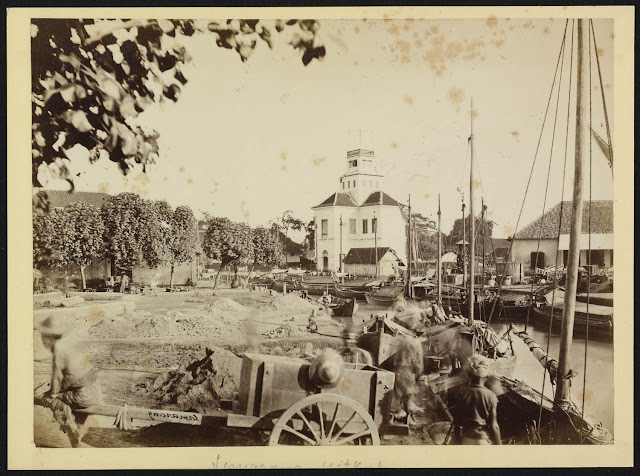 |
| From the left, Rizky, Fahry, Lovink, Ridho and Me, in front of Thio Sing Liong Mausoleum |
 |
| Inside the mausoleoum, where the Thio Sing Liong and His 2nd Wife are buried, taken by Rizky Yuniarso. |
The destination were undetermined yet. On the morning around 9 pm, we gathered in front of my elementeary school, SDN Sompok, and have a breakfast first on a waroong near there. Suddenly, Lovink, Ridho's classmate coming, and now we're five, and its make the trails more attractive. While breakfast, we discussed where is our destination today, and I offered them to exploring the remains of chinese grave along Sriwijaya street, and they approve it. The first destination were Thio Sing Liong Mausoleum, the grave of Thio Siong Liong together with his wife and relatives, who located near Gedung Wanita, Sriwijaya. Thio Sing Liong, was one's of the tycoon in Semarang city, His business was spice trading. His grave itself were in 100% condition, and this is the best preserve chinese grave in Sriwijaya, who already demolished on thge 70-80 decades and changed into settlements. We entered inside its mausoleoum and found that this was so luxurious. The Mausoleum was in form of sculpture of Thio Sing Liong and his Wife, and its from marbles. The marbles itself were imported from Genova, Italy. We took several photos, because we found some interesting goods, like His family photos and a bouquet with certification, Societiet Hwa Yoe Hwe Kwan, 15 December 1940.
Then we continued our trails to the former dorms of my father. There's still existed three chinese grave on its backyards. But when we were there, there's nothing left, its already demolished all.As my memories, one's of the grave are in form of turtleback, I never found it yet in everywhere, only there. As I read on wikipedia, the turtleback tombs are common grave form in the coastal area in mainland of china. For me this is a proof that the chinese people who coming to Indonesia are traders, traders are using ship right? And it must be setlled near the coastal area.
After that, we take a rest also take a lunch. There's an idea delivered by Ridho, to share about what we did through twitter. Since the power of social media are so strong now, we need to utillize it in order to increasing awareness of Semarang people about its the city history. Moreover, through twitter also, its possible to have an interactive interaction, so it'll be more interesting, at least the people itself know about what this city have.So today, I decide to make this account @lopenSMG so for everyone who have twitter account, kindly follow us and share what you know about Semarang city history specifically or Indonesia history generally with #blusukanSMG hastag. Keep tweeting! :)

















